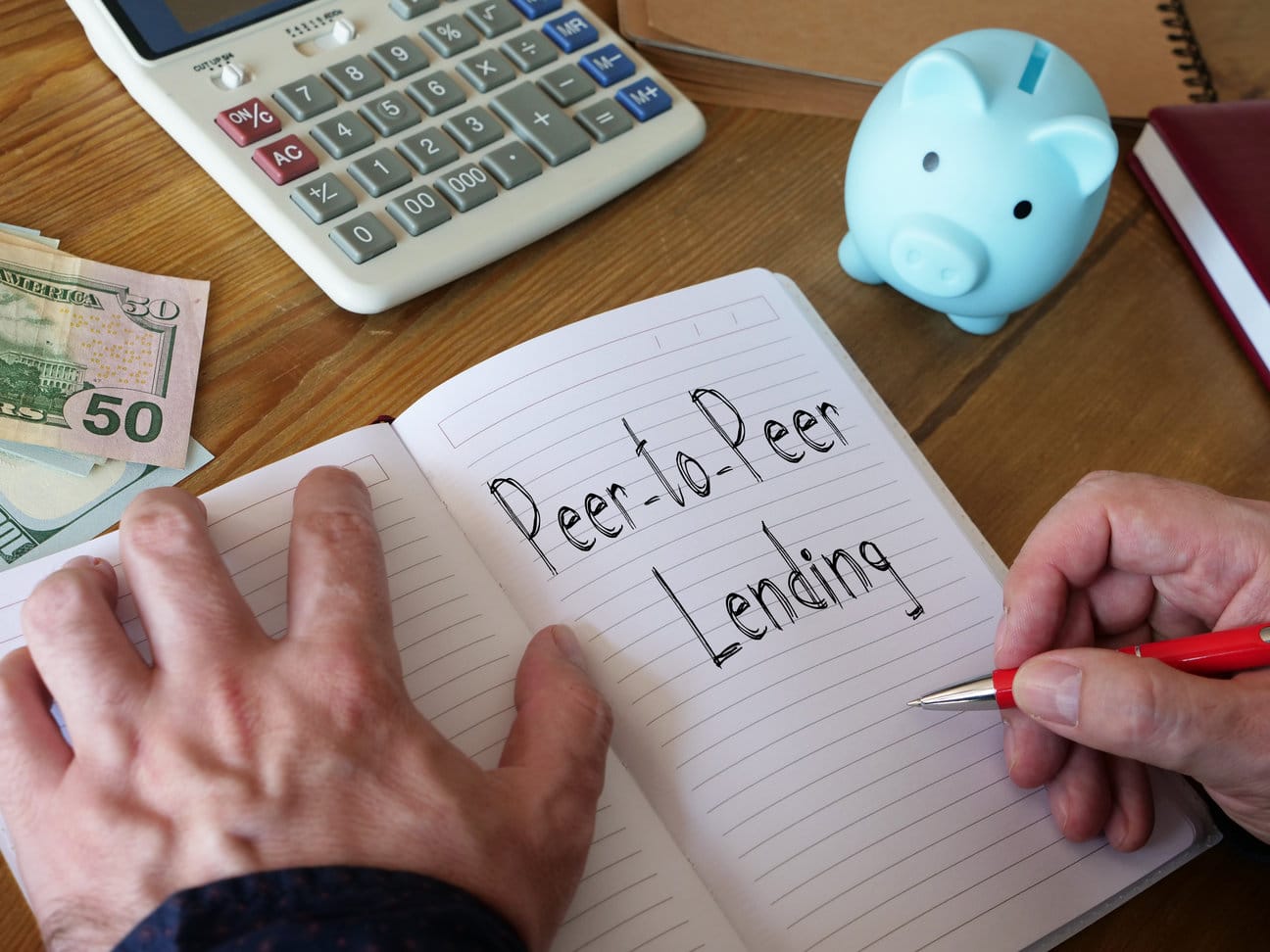Jasmine Birtles
Your money-making expert. Financial journalist, TV and radio personality.


Peer-to-peer lending (P2P) has grown in recent years. But what is it – and how can you both make money from investing in it?
As savings rates plummet to not-worth-it levels, putting your money into other things can help protect the future growth of your wealth. Peer-to-peer lending is a great alternative for some people – so we’ve put together a quick guide to help you decide if it’s an ideal option for you.
You should also read: 8 different types of investments for UK investors

If you’ve ever lent a friend a few quid with the expectation they’ll pay you back (hopefully with a coffee as interest), you already understand the basics of peer-to-peer (P2P) lending.
It’s a modern twist on traditional lending, where instead of borrowing from a bank, people or businesses borrow money directly from individuals just like you!
This is done through platforms that act as third-party intermediaries between the lender and the borrower.
Peer-to-peer lending offers higher interest rates than traditional savings accounts. However, it also comes with significantly more risk!
P2P lending platforms, like Funding Circle or Zopa, act as ‘matchmakers’, connecting borrowers with investors who are willing to lend money. Here’s how it works:
The main reason that some investors might consider p2p lending is that it offers higher interest than savings accounts or bonds. Plus, you get to spread your money across multiple loans to reduce risk.
But, like all investments, there’s no guarantee, and if a borrower defaults, you could lose your cash.
If you’re comfortable with a bit of risk and like the idea of earning passive income from lending, P2P investing could be worth exploring. Just be sure to do your homework. Some platforms offer protections, but there’s always a chance borrowers won’t pay up!
This type of investment is most suitable for younger investors who will not need to use the money that they invest for at least 10 years. It’s also worth noting that you shouldn’t invest with any money that you can’t afford to lose (just in case!)
While the interest is a lot higher than normal ISAs or index funds, you cannot withdraw your money from the account until the term you agreed to has come to an end.
If you decide to take out your money before the term ends, you might have to incur a withdrawal fee. This fee depends on the platform that you’re using. If you decide to withdraw your money early, you also need to ensure that the fees you’re being charged still leave you in a favourable position financially and you’re not losing money.
Your money also isn’t covered by the FSCS compensation scheme: if the platform that you use goes bust, your investment is lost. If your borrower defaults, you may not get your money back.
Like any investment, there’s a risk you’ll get back less than you put in – or lose it all. On the flip side, the return potential means that, for some, it’s worth this risk.
There are a variety of platforms that offer peer-to-peer lending services to UK investors. All of them have different fees, types of accounts, interest rates, and minimum investment amounts.
It’s important to shop around and select a platform that offers competitive fees, a strong customer support team and has a solid reputation amongst investors.
While on Ratesetter you can start with as little as £10 and earn interest daily, on other platforms like Zopa your minimum investment is £1,000 and the earnings are annual. Most platforms, however, offer similar interest rates and account lengths of up to 5 years.
Here is an overview of the most reputable P2P lending platforms in the UK:
Before choosing a platform, research the terms of each. Some require longer tie-ins, while others may have minimum investments. A few have a damage fund to help recover some lost investments, while others don’t.
Research well before you invest!
And remember, if you’re ever unsure about how to invest your money, seek independent professional advice from a registered financial advisor.
See: How to Know if a Trading Platform is Legit
Does P2P lending seem like a good investment for your financial goals? If so, here is a step-by-step guide on how to get started.
Before diving in, it’s important to do your research. Peer-to-peer lending is a relatively high-risk investment that shouldn’t be taken lightly!
Spend time assessing whether or not P2P fits into your wider investing strategy, long-term goals and risk tolerance.
It’s a good idea to speak to a financial professional before you make your final decision.
Not all P2P platforms are created equal. Some focus on personal loans, while others specialize in business lending. Some offer protection if borrowers don’t pay, while others don’t.
Here’s what to look for when picking a platform:
A good place to start is to review some of the top platforms that we mentioned earlier on in this guide.
This is not a “go big or go home” situation. Since P2P lending involves some risk, only invest money you can afford to tie up for a while.
Unlike stocks, where you can sell whenever you want, your cash is locked in until the loan term ends.
A smart strategy? Start small, test the waters, and gradually increase your investment as you gain confidence.
Would you lend your entire life savings to just one person? Probably not! The same logic applies to P2P lending. Never put all your money into a single loan.
Instead, spread your investment across multiple loans with different risk levels. For example:
Many platforms let you automatically spread your investment across dozens (or even hundreds) of loans, making diversification easy.
No investment is 100% risk-free. Here are the main risks with P2P lending and how to minimize them:
If someone doesn’t pay back their loan, you could lose money. Try to choose platforms with protection funds and spread your investment across many loans.
If the economy crashes, more borrowers may struggle to repay. Therefore, you should invest cautiously and avoid putting all your money into high-risk loans.
Unlike stocks, you can’t sell your loan easily. Its best practice to only invest money you won’t need in the short term.
Being aware of these risks means you can invest wisely and avoid nasty surprises.
Investing in P2P lending isn’t completely “set and forget.” While you don’t need to check your account daily, it’s smart to review your portfolio every few months.
Look out for:
Some platforms allow auto-reinvestment, meaning your repayments automatically go back into new loans. This helps compound your returns over time.
Once you start receiving interest and repayments, you have two choices:
If you’re in it for the long haul, reinvesting can help maximize your profits. But if you need the cash, withdrawing is always an option (as long as your loans have matured).
Peer-to-peer lending gives people starting up their business or wanting to launch a new product, a great way to secure funding. It’s not always easy to get a high-street bank loan, especially as a new (therefore unproven) company.
Check out our guide to funding your startup to decide if it’s the best way for you to borrow capital to set up your business!
Inspired to invest? Try reading these articles next!
Are you interested in learning more about investing? Why not sign up to the MoneyMagpie bi-weekly Investing Newsletter? It’s free and you can unsubscribe at any time if you find it isn’t for you.

Disclaimer: MoneyMagpie is not a licensed financial advisor and therefore information found here including opinions, commentary, suggestions or strategies are for informational, entertainment or educational purposes only. This should not be considered as financial advice. Anyone thinking of investing should conduct their own due diligence. When investing your capital is at risk.
Direct to your inbox every week
New data capture form 2023

Leave a Reply